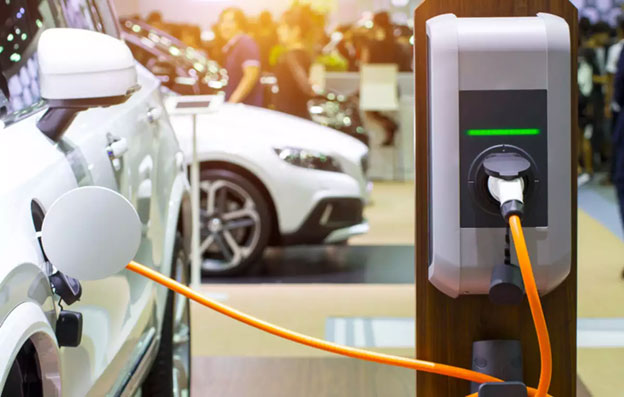The Advantages of Supercapacitors in EVs: From Regeneration to Rapid Charging
Do you wonder how the electrodes in supercapacitors of electric vehicles can augment the power output, fast charges, and energy density? The electric vehicle market is expanding, and higher power charging, efficient regenerative braking systems, and more efficient charging are increasingly relevant. Therefore, we brought an amazing solution of supercapacitors in EVs.
At zoxcell, we manufacture and supply some of the innovative solutions such as; supercapacitors, graphene batteries for electric vehicles and hybrids. In this blog post, we will look at how the supercapacitors in EVs are delivering new features and an extended lifespan of batteries in an EV.

What Are Supercapacitors and How Do They Work?
A supercapacitor is an electrical component that accumulates electrical energy in an electrostatic field. It enables supercapacitors to be charged and discharged at a substantially higher rate. The principles of construction of supercapacitors are almost the same as those of ordinary capacitors, two electrodes with an electrolyte between them and the energy is accumulated in the electric field created by the electrodes.
Supercapacitors have lower energy density than batteries, inaccessible energy density, but they have greater power density. They are able to deliver energy swiftly. Therefore, supercapacitors are suitable in applications that need short spikes of current such as the regenerative braking required in electric vehicles (EVs) where energy is harvested during deceleration and put into circulation.
The Key Advantages of Zoxcell’s Supercapacitors in Electric Vehicles
Zoxcell supercapacitor within vehicles has several benefits and can help the improvement of comprehensive performance, level of energy density and eco-compatibility of electric vehicles (EVs). Here are some of the key benefits:
What Factors Are Responsible for the Lifespan of Graphene Supercapacitors?
Bridging the Gap Between Energy Generation and Consumption
Regenerative braking allows extra energy to be generated. There is the problem of managing the energy used by electric vehicles. That’s why supercapacitors in EVs also offer EV energy storage during braking and releasing. It effectively means that energy has to be utilised optimally so that there is no wastage, which adds range and therefore efficiency.
Enhancing Regenerative Braking
Supercapacitors are very useful especially in regenerative braking; a system that reclaims energy that would otherwise be dissipated during braking and feeds it back to the energy storage system. While these energy savings may pose a problem to the traditional battery to capture and store within a shorter time especially during hard braking, supercapacitors have no problem with such short energy bursts.
Rapid Charging Times
Another benefit of supercapacitors in EVs is that they are able to charge quickly. Unlike batteries, supercapacitors charge in almost no time at all. It makes them ideal for cycling at highly powered applications such as those requiring recharging when on low power. For example, when stopped at traffic signals or during short braking periods. Supercapacitors’ enhanced opportunity to charge faster enables less downtime for drivers that has made the usage of EV energy storage more convenient.
Prolonging Battery Life
charge and discharge cycles of an electric vehicle supercapacitors help manage some of the stress on more conventional batteries. Batteries are generally designed for continuous energy discharge, and too frequent charging or discharging of batteries reduces the battery’s life span. However, by regulating these power-push demands using supercapacitors, then the battery itself can be cycled more effectively longer, thereby lowering the replacement costs.
Improved Energy Efficiency in Regenerative Braking
Also the other utilization of the supercapacitors in the EVs is that they can fully capture the retardation energy during regenerative braking. As a result of charging and discharging processes, super capacity enhances the overall energy efficiency of the car. This assists in saving energy, to cover more distance using a single charge and thus creating a green efficient transport mechanism.
What Makes Zoxcell Unique in the Supercapacitor Market?
Zoxcell leads the charge in advanced energy storage with supercapacitors and graphene batteries for electric vehicles. Zoxcell provides efficient, durable, and sustainable energy solutions for the electric vehicle industry. Here's why we are the best choice:
- Rapid charging, long-lasting batteries, and improved regenerative braking for best performance.
- Energy-efficient systems minimize carbon footprint.
- Supercapacitors bridge energy gaps to maximize range and efficiency.
- Reliable, high-performance solutions built for EV requirements.
- Tailored to meet specific performance requirements.
- Long-term extended battery life and reduced maintenance cost.
Conclusion
Batteries in EVs are becoming more advanced through supercapacitors which enable faster charging, better regenerative braking and longer battery cycle use. Because supercapacitors in EVs solve the problem of providing high energy for acceleration and deceleration in electric vehicles. As a result of their capability for high-power applications, long cycle-life, and high energy density, supercapacitors are seen as critical to the future of electric transport. So, revolutionize the way of your EV energy storage and contact us now.





